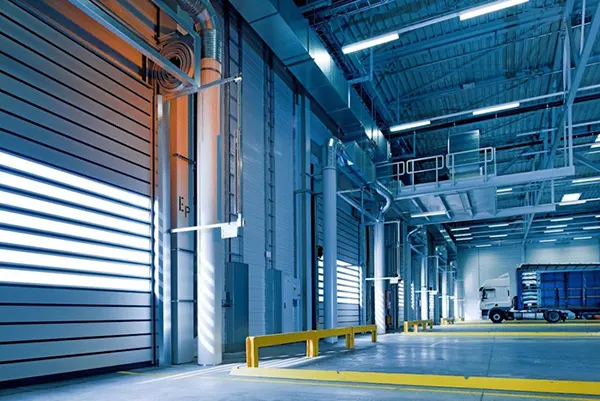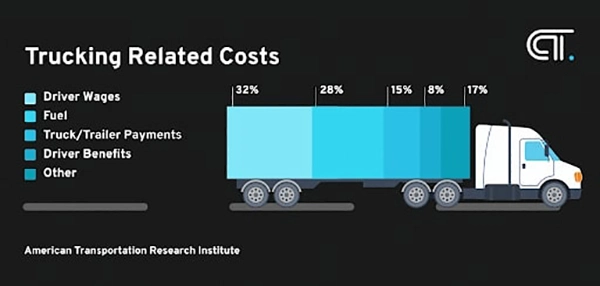Maximizing Efficiency in Heavy Equipment Transport for Businesses

KEY TAKEAWAYS
- Understand why efficiency should be your priority
- Discover how hidden costs are draining your budget and how smart route planning can save your money
- Learn how to prepare your equipment and leverage technology to save money and time
In this fast-moving world, time is money. Every minute spent inefficiently can eat into your profit and productivity, causing various problems. Moving large equipment requires careful planning and a clear understanding of the cost factor involved.
Now look, whether you are transporting heavy equipment across the town or across the country, optimizing the whole process and planning to maximize its transportation efficiency is very important.
In this blog, I am going to cover the step-by-step process that many successful businesses are using to run their operations efficiently.
Your Complete Transport Plan
- Why efficiency should be your priority
- Hidden costs that are draining your budget
- Route planning and optimization
- Preparing your equipment
- Leveraging technology to save time and money
- Long-term transport partnerships
Why Efficiency Should be Your Priority
Stop and think for a second…
A lot of business owners make this wrong assumption about transport…
They think that the cheapest transport will save them the most money. But heavy equipment transport for businesses is a complex task that needs a strategic approach.
Keep in mind that cost is just one side of the dice. There are other implant factors too, like speed and reliability.
With the transport market expected to reach USD 15.2 billion by 2033, competition is heating up. There are more opportunities for businesses that know how to maximize transport efficiency.
Think about this:
A budget carrier that damages your equipment or makes you wait will cost you thousands in project delays. On the other hand, an efficient transport partner that charges more can save you money through reliability and speed.
Successful businesses think in terms of the total cost of ownership vs. just shipping rates.
Hidden Costs that are Draining Your Budget
Let’s dive into a common question that I get:
“When it comes to the heavy equipment transport business, what do you think is the biggest mistake companies make?”
The answer is…
They look only at the quote and don’t take hidden costs into consideration. Hidden costs that can double transport expenses if not managed.
Expert transport planning allows you to uncover and avoid all these hidden costs.
The Most Typical Hidden Costs Include:
- Permits and routing fees. They change from state to state and can add up to thousands to your transport bill. Savvy businesses work with carriers who understand permit requirements.
- Loading and unloading delays. Every hour of delay costs you. Correct equipment preparation will prevent this expensive surprise.
- Seasonal pricing surges. Pricing can be 22% higher in peak construction months. Careful timing of your transport can help you avoid this extra period.
- Insurance underages. If your equipment is not fully insured, you are taking the risk when something goes wrong.
The key is working with transport partners that have transparent pricing and include all these costs in their quotes. Also, here is a demonstration of trucking-related costs:

Route Planning and Optimization
Route optimization is where you really see businesses focused on efficiency rise above the rest.
The difference between a well-planned route and a regular one is 15-30% less transport cost. The good thing for the heavy equipment transport business is that route planning technology has changed the game of heavy equipment transport. It helps find the most efficient routes while avoiding permit restrictions.
Here is how it works:
Professional carriers have access to advanced software that takes into account bridge weight limits, height restrictions, permit requirements, etc. This helps avoid costly detours and delays.
- Load consolidation. Plan multiple equipment moves at the same time. This will get you a heavy discount from transport companies for bundling loads.
- Backhaul opportunities. Find opportunities to get trucks to return loaded instead of empty. Businesses with solid relationships with their transport partners can find these opportunities.
Top transport companies have invested significantly in route optimization software. It’s not only about the shortest distance between A and B; it is the most efficient path that takes into account all variables related to your shipment.
DID YOU KNOW
The Movement of 70 Percent of Global Goods Relies on Trucks Within the Logistics Industry.
Preparing Your Equipment
Equipment preparation is the secret sauce of businesses that consistently get high-efficiency results with heavy equipment transport.
The percentage of businesses is very high, which does not take into account how much this step before pickup affects transport cost and efficiency. Completing preparation steps before pickup will eliminate delays, damage, and unexpected charges that blow up your budget.
- Accurate documentation. Weight, dimensions, and special handling requirements need to be 100% accurate.
- Fluid removal and securing loose items. This will prevent damage and weight overages. Transport companies charge exorbitant fees for damaged or overweight equipment.
- Access route evaluation. Make sure that both pickup and delivery locations are accessible. If a carrier can’t get to your equipment safely, you’ll be charged additional handling.
Businesses that get the best results have standard operating procedures for equipment preparation. This consistency reduces unknown variables and allows transport partners to offer accurate pricing and reliable service.
Leveraging Technology to Save Time And Money
In today’s world, technology is transforming heavy equipment transport for business. But you need to know which solutions provide real value.
The carriers that are using the latest technology are leaving behind those who are using antiquated systems.
- Real-time tracking systems. Gives you visibility throughout the entire transport process. This way, you know exactly where your equipment is and when it will arrive.
- Digital documentation and invoicing. Streamlines the administrative side of transport. Electronic bills of lading and automated reporting will save you time and reduce errors.
- Load optimization software. Makes sure your equipment is transported in the right trailer configuration. This will improve safety and reduce costs.
The key is to partner with transport companies that are investing in technology rather than cutting corners on outdated systems.
Long-Term Transport Partnerships
The most successful businesses with the best transport efficiency don’t see carriers as vendors. Instead, they see them as partners and build strategic partnerships.
Long-term relationships with quality transport providers bring compounding benefits over time.
- Volume discounts. You get them when you consolidate your transport business with preferred partners. Regular customers enjoy preferred pricing and priority scheduling.
- Operational knowledge. Is built as transport partners become more familiar with your specific needs. They will surely understand your equipment, timelines, or deadlines, and quality standards.
- Flexibility during peak season. Is available because of established relationships. When transport capacity shrinks, preferred customers have priority to available equipment and drivers.
The best businesses evaluate their transport partners on total value rather than just on pricing—often choosing to work with experienced providers like Austin-Based Long-Distance Moving Experts who offer both reliability and long-term efficiency.
Putting it all Together
Transport efficiency in the transportation business is not about finding the cheapest option available; it’s about making the whole process smoother and well-organized.
Businesses that are successful with transport efficiency see it as a strategic advantage. Optimized planning, proper partner selection, and process advancements deliver results that are compounding.
Start by auditing your current transport processes. This thing will help you notice where you are incurring unnecessary expenses and where you can improve.
Try to focus on total cost, not just quoted rates.
Try to make your bond strong with quality transport partners. These partnerships become more valuable over time and deliver competitive advantages.
Remember, transport operations need the same strategic thinking that you apply to all your other business processes.
Ans: Railways, waterways, and heavy-duty trucks are primary types of transport used to carry heavy and bulky goods.
Ans: It includes fuel price, carrier rates, insurance, and warehousing.
Ans: Ans: Rail freight offers a cost-effective and reliable option, especially for moving large volumes across regions or countries.
Ans: It is a process of selecting the minimum cost path from the starting position to a destination through a transport network.
